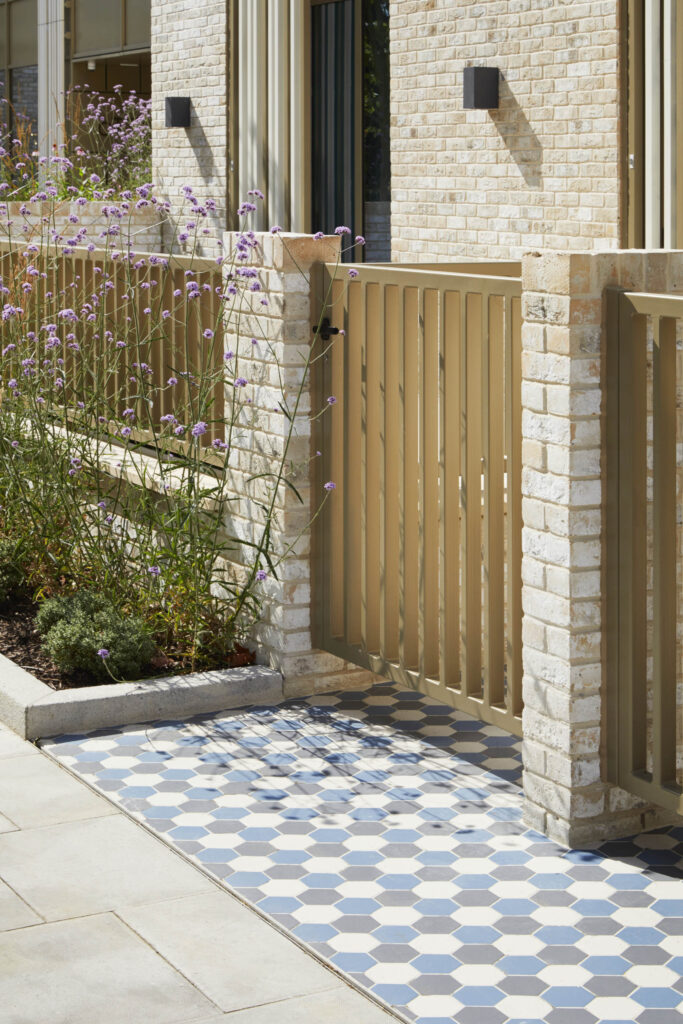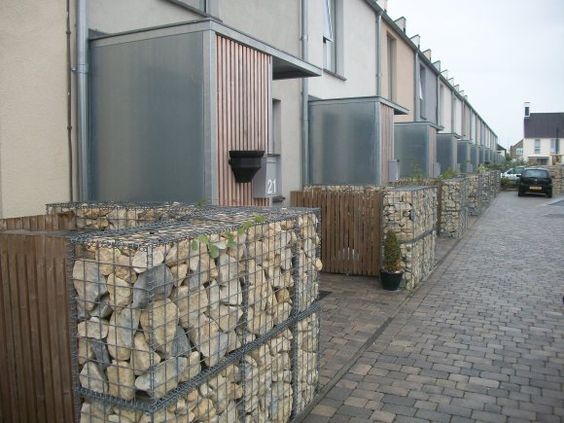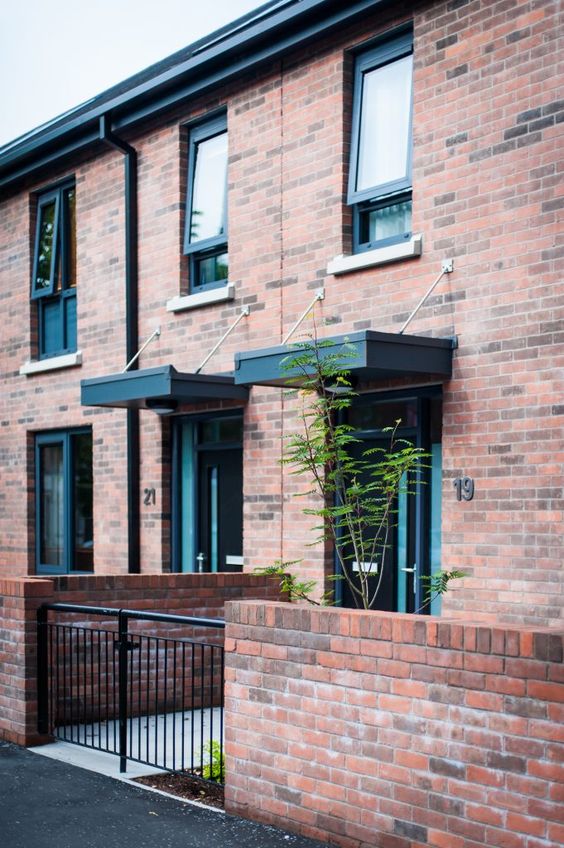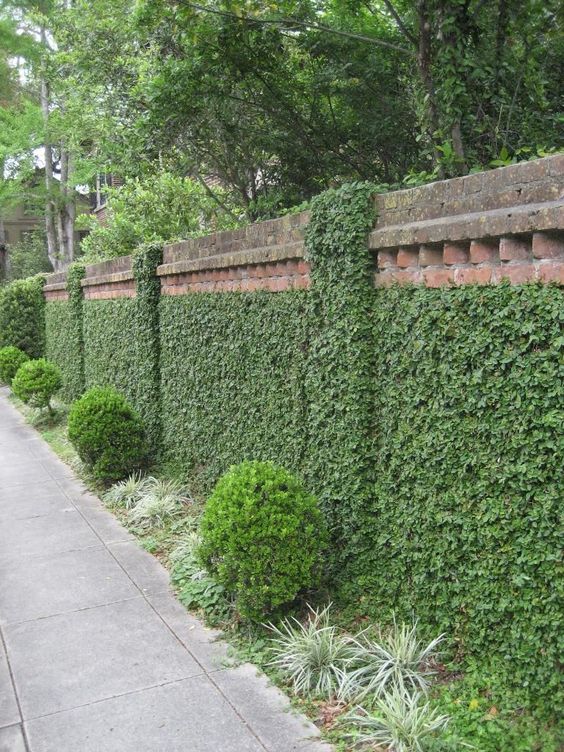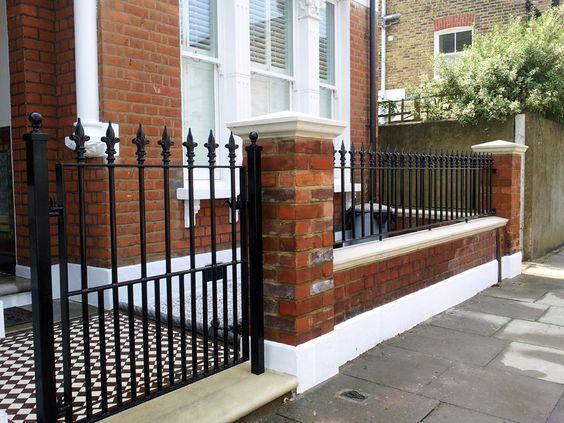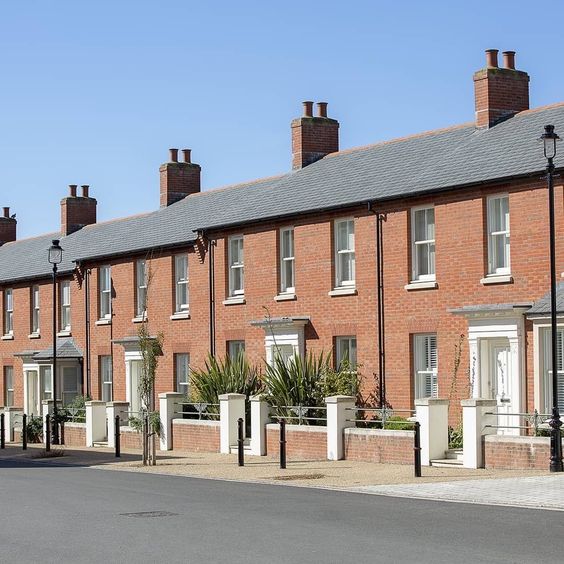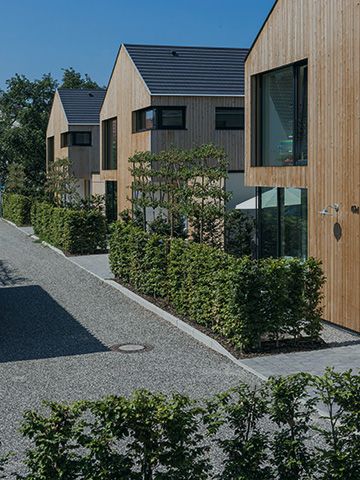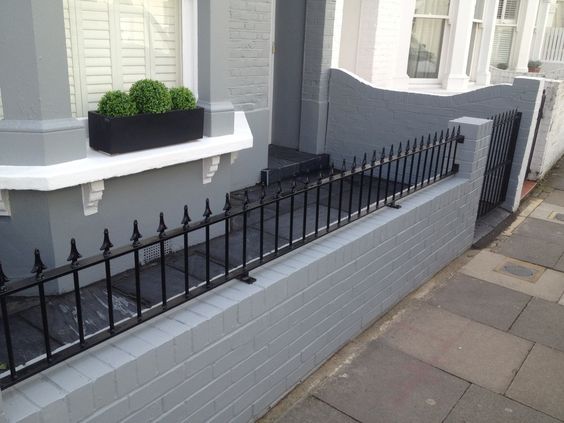Trafford's Places
Trafford Park
Trafford Park, the world’s first and still one of Europe’s largest industrial estates, lies in the northernmost part of the Borough. Trafford Park is one of the most important employment locations in Greater Manchester.
Trafford Park was the ancestral estate of the de Trafford family, one of the oldest recorded families in England. The was the opening of the Manchester Ship Canal in 1894 that made Trafford Park a prime site for industrial development – Trafford Hall was opened as a hotel in 1899 to serve prospective industrialists. The British Westinghouse Electric Company, founded in Trafford Park in 1899, was for almost 100 years the most important engineering facility in Britain – it was sold and renamed Metropolitan-Vickers in 1919.
The announced arrival of the Westinghouse factory acted as a spur to the development of the Village and in 1899 Trafford Park Dwellings Ltd was formed, with the aim of providing housing for the anticipated influx of new workers. By 1907 it was estimated that the population of the Village was over 3,000.
The Ford Motor Company set up a manufacturing base in Trafford Park in 1911, whilst the Park was used for the manufacture of munitions, chemicals and other material during the First World War, and produced the Rolls-Royce Merlin engines used to power the Spitfire and the Lancaster aircraft in the Second World War.
At its peak in 1945, an estimated 75,000 workers were employed in Trafford Park, but employment began to decline in the 1960s, through until the 1980s. The Trafford Park Urban Development Corporation, formed in 1987, transformed the infrastructure and greened the environment in the Park, attracting new investment.
The area has a sprawling urban form with a variety of industrial buildings, plant and an ever increasing number of large commercial sheds. The industrial nature of the area means that the townscape is made up of large and expansive linear features, including wide roads, large junctions, bridges and canals. Exceptions to this include the Village, which was laid out in a grid pattern, with the roads being numbered American style instead of being named. There are a number of distinctive buildings within the Village including the Grade II listed Trafford Park Hotel, St Antony’s – the Tin Tabernacle church, and the former school house. The Victorian boating lake to Trafford Hall has been retained and now sits within Trafford Ecology Park.
Today Trafford Park is also home to the Trafford Centre, a regional focus for retail and leisure activities. It attracts high numbers of visitors but the majority arrive by car, contributing to the dominance of the highway infrastructure. The Trafford Park Metrolink Line provides a new sustainable public transport link into the area.
To the west of the Trafford Centre, a large previously undeveloped area, now known as Trafford Waters, is being developed with a mix of 3,000 homes and new commercial floorspace, whilst Wharfside, to the north, is also set to become a new focus for residential-led mixed useA well-integrated mix of different land uses which may include retail, employment, leisure and other service uses with decent homes of different types and tenures to support a range of household sizes, ages and incomes. More redevelopment. The characterCharacter includes all of the elements that go to make a place, how it looks and feels, its geography and landscape, its noises and smells, activity, people and businesses. This character should be understood as a starting point for all development. Character can be understood at three levels; the area type in which the site sits, its surroundings and the features of the site. More of Trafford Park is likely to change dramatically in these areas with a number of high-rise buildings.
Within Trafford Park there will be renewed emphasis on greening, open space provision and permeabilityThe degree to which an area has a variety of pleasant, convenient and safe routes through it. More, with the provision of active travelMaking journeys by physically active means like walking, wheeling or cycling, rather than motor vehicle. More corridors for both pedestrians and cyclists – there are still a number of disused railway lines running through the area, a legacy of the former Trafford Park railway, which could provide active travelMaking journeys by physically active means like walking, wheeling or cycling, rather than motor vehicle. More corridors. Trafford’s Green Infrastructure Study aims to transform Trafford Park into a more sustainable employment district whilst working with both existing and anticipated businesses to become more environmentally innovative and responsible. Whilst the Development Corporation introduced a strong identityThe identity or character of a place comes from the way that buildings, streets and spaces, landscape and infrastructure combine together and how people experience them. More to Trafford Park with bespoke boundary treatment and extensive tree planting, this has been eroded in recent years as developers and investors have sought to maximise the development potential of sites and introduce standardised security fencing without adequate provision being made for planting.
One of the predominant landscape features of Trafford Park is its network of canals which traverse and border the site. These canals, once focused around trade and industry, are now primarily leisure routes. Whilst adjoining land uses generally turn their backs on the waterways, new developments should seek to create attractive frontages to the canals, and supplement the biodiversity benefits they offer.
Notwithstanding extensive redevelopment, a number of former-industrial factories and warehouses remain, including the former Electric Cable Works, Ford Motor Works, Victoria Warehouses and a number of bonded warehouses. These buildings illustrate the unique industrial characterCharacter includes all of the elements that go to make a place, how it looks and feels, its geography and landscape, its noises and smells, activity, people and businesses. This character should be understood as a starting point for all development. Character can be understood at three levels; the area type in which the site sits, its surroundings and the features of the site. More of Trafford Park and should be retained and adapted for new employment uses. The retention and reuse of Victoria Warehouse acts as a fine example of how the Park’s industrial heritage can be retained. Reference to this traditional red brick heritage should be taken as a design cue for both new residential and commercial buildings in Trafford Park, such as the approach taken with the new apartment building at No. 1 Old Trafford.
In stark contrast to these heritage assets, most of the new commercial sheds in Trafford Park are bland featureless boxes. The opportunity exists for a bolder approach to be taken in the design of such buildings – varied building and roof forms and a bolder expression in the use of materials should be explored.
Development Plan Documents
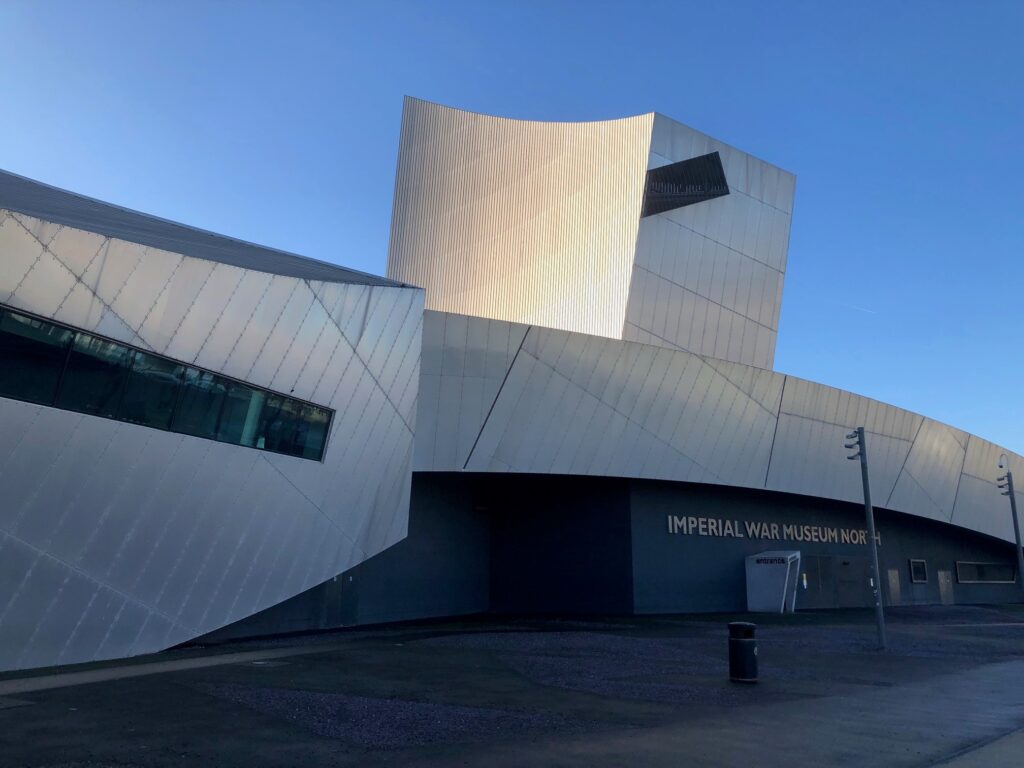
Imperial War Museum North
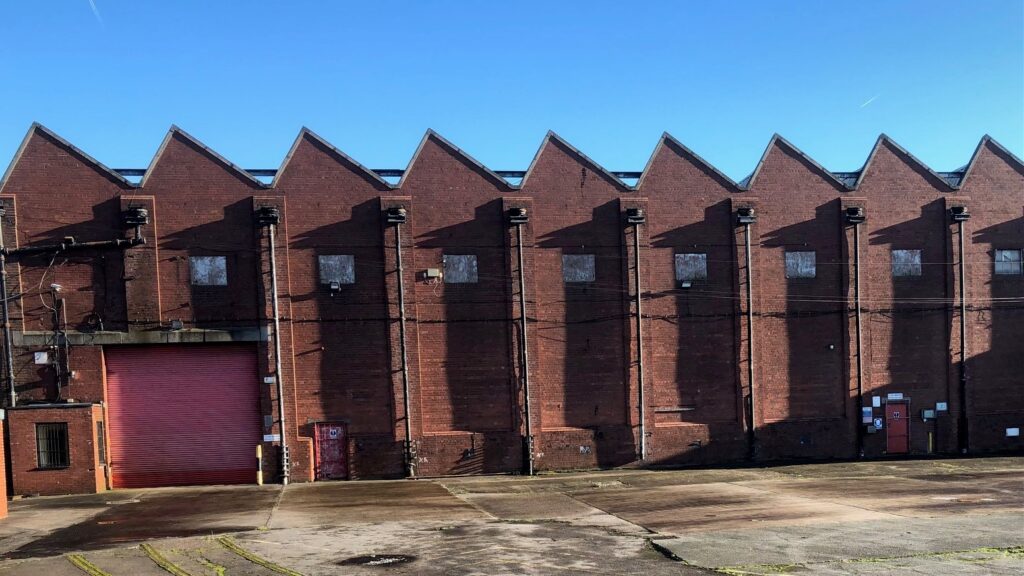
Northern Lights
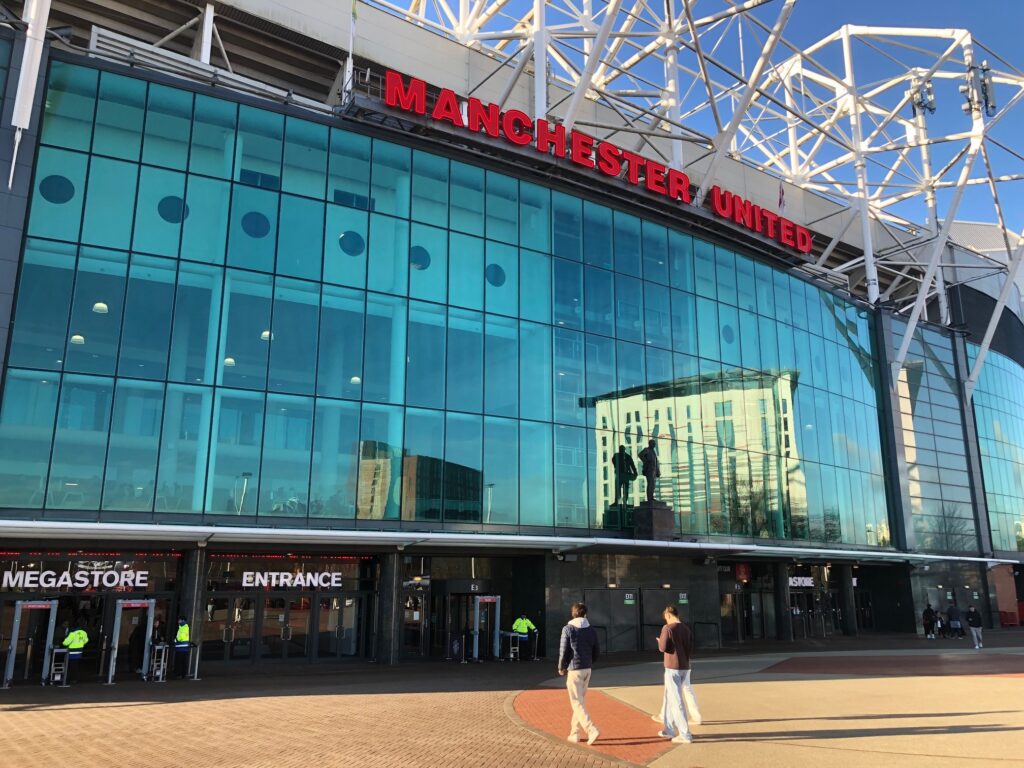
Old Trafford Stadium
Evolution
Local Character Areas
The Village is a well-preserved historic area of Trafford Park and was formerly a residential neighbourhood. It has a more domestic scale than other areas and features the only traditional “high street” in the area.
The Trafford Centre and land that surrounds it form a key visitor attraction in the Borough. It includes a number of retail and leisure opportunities close to the M60. It is dominated by a complex highway and car-parking network and is characterised by an eclectic mix of building forms and styles.
Central Way is the primary movement corridor linking directly to the M60 motorway. It includes a recent extension to the Metrolink tram network and forms most visitor’s’ experience of the area.
The main body of Trafford Park includes a mix of commercial, light industrial and heavy industrial uses. It has evolved over time with changes in manufacturing and is seeing some change in the businesses that operate within. It is notable for its verdant characterCharacter includes all of the elements that go to make a place, how it looks and feels, its geography and landscape, its noises and smells, activity, people and businesses. This character should be understood as a starting point for all development. Character can be understood at three levels; the area type in which the site sits, its surroundings and the features of the site. More throughout and includes a small ecology park.
The Bridgewater Canal passes through Trafford Park. It provides a link to Old Trafford and Stretford as well as into Manchester city centre and is part of the Regional Cycle Network Route 82.
Trafford Waters is a newly planned mixed-useA well-integrated mix of different land uses which may include retail, employment, leisure and other service uses with decent homes of different types and tenures to support a range of household sizes, ages and incomes. More neighbourhood making use of land adjacent to the Manchester Ship Canal close to the Trafford Centre. It will bring a residential and workforce population to the area.
The Manchester Ship Canal is a significant heritage assetA building, monument, site, place, area or landscape identified as having a degree of significance meriting consideration in planning decisions, because of its heritage interest. It includes designated heritage assets and assets identified by the local planning authority (including local listing). More that should make better use of its waterside setting, within both Trafford Park and along the green edge to the Borough through Davyhulme and beyond to Partington.
Place Specific Design Cues
Commercial sheds and offices
Context dependent design cues should be taken from the best commercial sheds to be delivered in recent years such as Adidas on Mosley Road, and the best commercial / office buildings including Regatta and ITV Studios. The development of the Cobra Court estate on Brightgate Way illustrates how a landscape-led approach can significantly enhance the appearance and appeal of an industrial / commercial development.
New Residential and Commercial Development at Trafford Waters and Wharfside
In addition to this Code, regard should also be had to the Trafford Waters Design Framework, the Wharfside Design Framework and the Wharfside Masterplan. Trafford Waters and Trafford Wharfside are shown as ‘New Places’ on the Area Coding Plan. The Imperial War Museum North has set the bar for iconic design quality along the Wharfside waterfront. The opportunity that the war museum has created should not be passed up – new development should strive to deliver equally iconic buildings.

